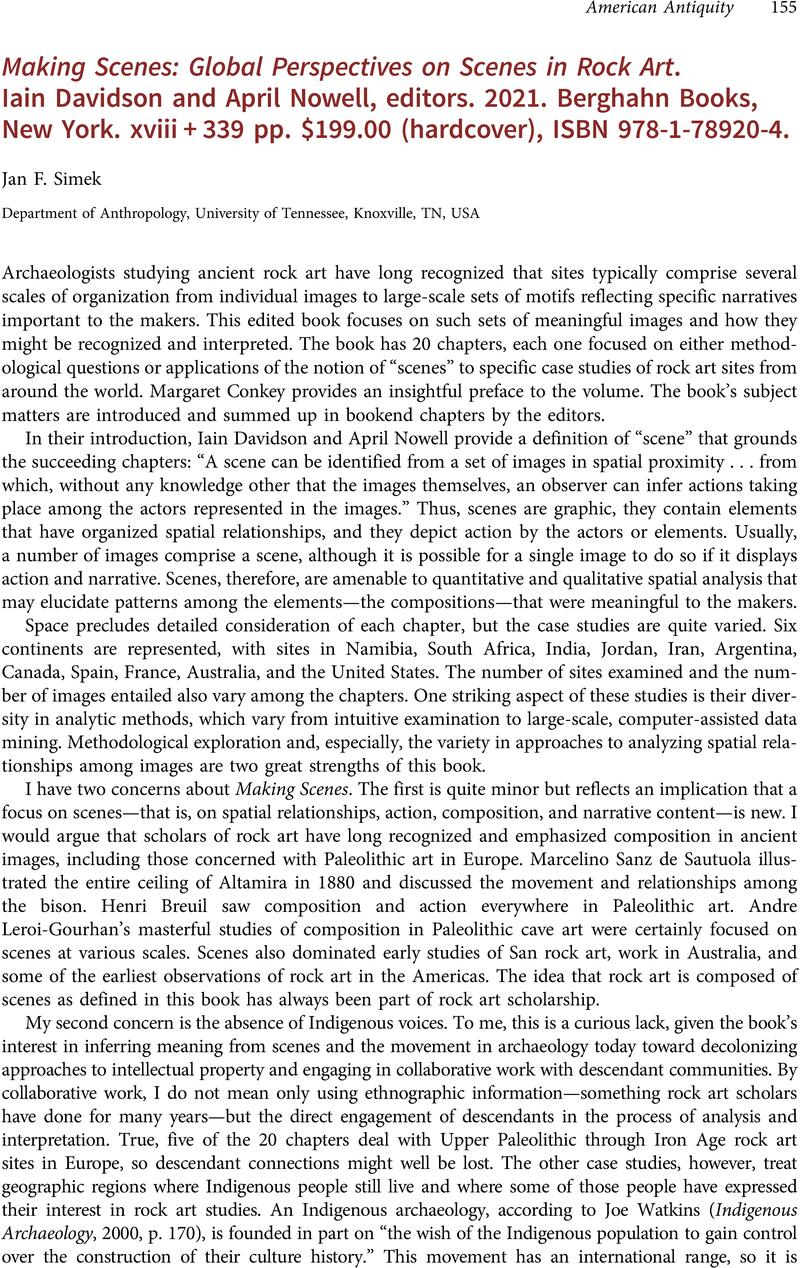No CrossRef data available.
Article contents
Making Scenes: Global Perspectives on Scenes in Rock Art. Iain Davidson and April Nowell, editors. 2021. Berghahn Books, New York. xviii + 339 pp. $199.00 (hardcover), ISBN 978-1-78920-4.
Review products
Making Scenes: Global Perspectives on Scenes in Rock Art. Iain Davidson and April Nowell, editors. 2021. Berghahn Books, New York. xviii + 339 pp. $199.00 (hardcover), ISBN 978-1-78920-4.
Published online by Cambridge University Press: 02 October 2023
Abstract
An abstract is not available for this content so a preview has been provided. Please use the Get access link above for information on how to access this content.

- Type
- Review
- Information
- Copyright
- Copyright © The Author(s), 2023. Published by Cambridge University Press on behalf of the Society for American Archaeology


